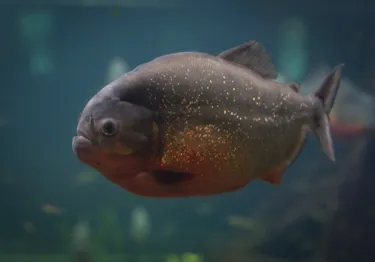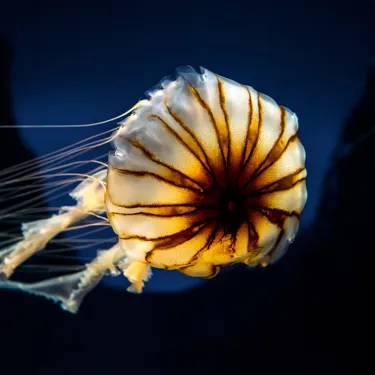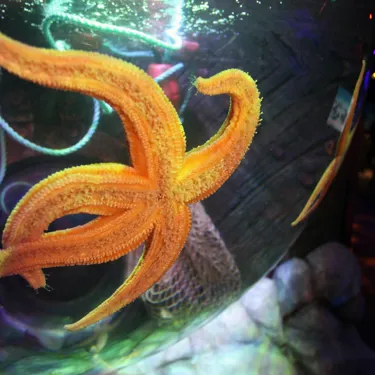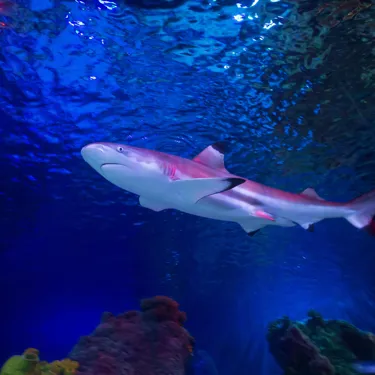Are Piranhas Dangerous? The Truth About Piranhas
- Wednesday 7th February 2024

Welcome to SEA LIFE Manchester Aquarium's comprehensive guide to Piranhas. In this article, we'll delve deep into the world of these intriguing creatures. From their biology and habitat to their behaviour and ecological role, we'll leave no piranha stone unturned. Join us as we separate fact from fiction and answer the burning question: Are Piranhas really dangerous?
What are Piranhas?
Piranhas are intriguing freshwater fish known for their razor-sharp teeth and ferocious reputation.
Piranhas are carnivorous fish with a reputation for their sharp teeth and voracious appetite. They primarily feed on a diet consisting of fish, smaller aquatic animals, and occasionally carrion (dead animals). Contrary to popular belief, piranhas do not typically attack humans unless they feel threatened or are in a state of extreme hunger.
Yes, piranhas can survive in fish tanks, but it's important to provide them with a suitable environment. Keeping piranhas in captivity requires a spacious tank with appropriate water quality and temperature. Additionally, they need a varied diet to stay healthy. However, it's crucial to remember that piranhas are not beginner fish and should only be kept by experienced aquarists who can meet their specific care requirements.
There are over 30 recognized species of piranhas, but some of the most well-known ones include the Red-Bellied Piranha, Black Piranha, and White Piranha. Each species has its own unique characteristics, such as size, colouration, and behaviour. These differences contribute to the overall diversity of this fascinating group of fish.
Yes, piranhas are known for their group-feeding behaviour. They often form schools or shoals, especially during their hunting activities. Group hunting allows them to overwhelm their prey more effectively. However, not all piranha species exhibit this behaviour, and individual feeding can also occur.
While the Amazon River basin is a well-known habitat for piranhas, they are not exclusive to this region. Piranhas can be found in various freshwater habitats throughout South America, including rivers, lakes, and tributaries. Their distribution extends beyond the Amazon, encompassing a wide range of ecosystems within the continent.
Understanding piranha behaviour
Piranha Life Cycle
The life cycle of piranhas is a fascinating journey that spans various stages of development. It begins with the hatching of piranha eggs in secluded nesting sites along the riverbanks. Once hatched, the young piranhas, known as fry, are highly vulnerable to predators. They rely on hiding in dense vegetation for protection during their early stages. As they grow, piranhas undergo significant transformations in their body structure, with their sharp teeth starting to develop. Throughout their juvenile phase, they continue to seek refuge in sheltered areas to avoid larger fish and predators. It's during their adolescent years that piranhas start to exhibit their notorious feeding behaviour, and as they reach maturity, they become skilled hunters, contributing to the overall balance of their aquatic ecosystem.
Piranha Feeding Habits
Piranhas are renowned for their carnivorous nature and sharp teeth, which play a crucial role in their feeding habits. These fish have a diverse diet that primarily consists of other fish, small aquatic animals, and occasionally carrion. Piranhas are opportunistic feeders, often ambushing their prey in groups when the opportunity arises. Contrary to popular belief, they don't typically feed on large mammals or attack humans unless provoked or when their natural food sources are scarce. Piranhas are known for their efficient hunting techniques, which involve rapid strikes and tearing of flesh with their sharp teeth. This collective feeding behaviour is a survival strategy, allowing them to overwhelm larger prey and share in the spoils. While piranhas are fierce predators, they also serve as essential scavengers, helping to clean up the aquatic environment by consuming decaying matter and contributing to the overall health of their ecosystem.

Ecological Role
The piranha fish, often depicted as a ruthless predator, actually plays a significant and multifaceted ecological role within its native freshwater ecosystems in South America. While they are indeed skilled hunters, their presence is essential for the overall health and balance of these aquatic environments.
1. Controlling Prey Populations: One of the most crucial ecological roles of piranhas is their role in controlling prey populations. By feeding on smaller fish and other aquatic organisms, they help regulate the numbers of these species. This predation pressure ensures that certain prey populations do not explode, which, in turn, helps maintain the health of the ecosystem by preventing overgrazing of aquatic vegetation and promoting biodiversity.
2. Carrion Consumption: Piranhas are opportunistic feeders and are not just hunters but also scavengers. They play a vital role in cleaning up their aquatic habitats by consuming carrion (dead animals). This scavenging behaviour helps prevent the accumulation of decaying organic matter, which can lead to water pollution and the spread of diseases. Thus, piranhas contribute to the overall cleanliness and water quality of their ecosystems.
3. Nutrient Cycling: When piranhas feed on other fish and organisms, they digest their prey and excrete waste into the water. This waste contains essential nutrients like nitrogen and phosphorus, which are vital for the growth of aquatic plants and algae. The presence of piranhas in the food chain helps recycle these nutrients, promoting the productivity of primary producers and supporting the entire food web.
4. Predator-Prey Dynamics: The fear of piranhas among potential predators can have cascading effects on aquatic communities. Their mere presence can influence the behaviour and distribution of other fish species, which may adjust their activities and habitat choices to avoid becoming piranha prey. This, in turn, can impact the spatial and temporal dynamics of the entire ecosystem.
In summary, piranhas, with their dual roles as predators and scavengers, contribute significantly to the ecological balance of their habitats. They help control prey populations, prevent the buildup of organic matter, recycle essential nutrients, and influence the behaviour of other species in the ecosystem. While they may have a fearsome reputation, piranhas are indispensable components of the intricate web of life in South American freshwater ecosystems.
So, are Piranhas dangerous?
Piranhas, while often portrayed as extremely dangerous to humans, are not the indiscriminate man-eaters that popular culture sometimes suggests. Piranha attacks on humans are relatively rare, and the level of danger they pose to people can vary depending on several factors.
Firstly, it's important to understand that piranhas are primarily scavengers and opportunistic feeders. They typically feed on smaller fish, aquatic animals, and carrion. Piranha attacks on humans usually occur when the fish feel threatened or when their natural food sources are scarce, such as during the dry season when water levels drop and food becomes scarcer.
Secondly, the severity of a piranha bite can vary depending on the species of piranha. While some species have more robust jaws and teeth capable of inflicting deeper wounds, others have less powerful bites. The Red-Bellied Piranha, for example, is one of the more well-known species and is considered responsible for most piranha attacks on humans. However, even in these cases, piranha attacks on humans are typically limited to nips or small bites, and fatalities are extremely rare.
Additionally, factors like the size and behaviour of the human involved can influence the outcome of a piranha encounter. Thrashing or splashing in the water can attract piranhas, as they may interpret such movements as signs of injured prey. Remaining calm and still in the water can reduce the likelihood of attracting their attention.
In summary, while piranhas are carnivorous and can deliver painful bites, they are not inherently bloodthirsty creatures seeking out human prey. Piranha attacks on humans are infrequent and usually involve minor injuries.
Check out what creatures are on display at SEA Life Manchester.
Related posts

7 Things You Didn't Know About Jellyfish
1. The largest recorded jellyfish had tentacles over 120ft long!
Read more

10 Amazing Shark Facts about Black Tip Reef Sharks
If you're intrigued by the enigmatic world of marine life, you'll be captivated by the black tip reef shark. These incredible creatures are known for their distinctive appearance and unique behaviours. Dive into the underwater world of black tip reef sharks with these 10 fascinating facts.
Read more